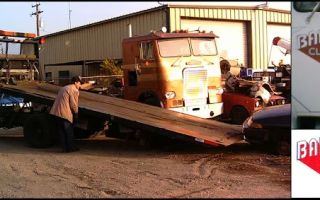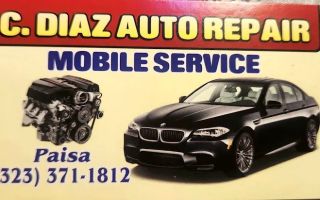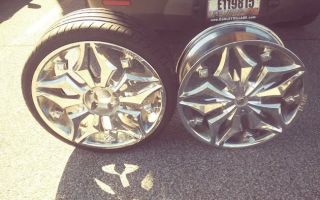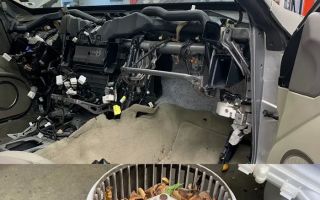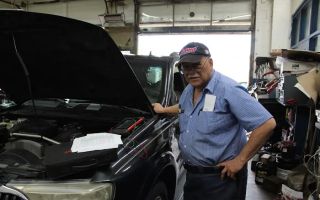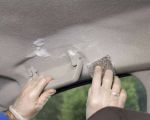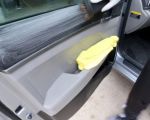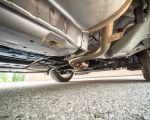- What-to-Do-First-When-Power-Seat-Motors-Are-Slow
- Common-Reasons-Why-Power-Seat-Motors-Become-Slow
- How-to-Troubleshoot-Slow-Power-Seat-Motors
- Electrical-Issues-and-How-to-Recognize-Them
- Mechanical-Causes-You-Should-Check
- When-to-Seek-Professional-Help
- Real-Stories-From-Drivers-Experiencing-Slow-Power-Seats
- How-to-Prevent-Future-Problems
What to Do First When Power Seat Motors Are Slow
When you notice your car's power seat motors moving slower than usual, it’s easy to assume the worst—but the cause is often simple. Before diving into complicated repairs, start by paying close attention to when the issue occurs. Does the seat slow down only in cold weather? Does it struggle when moving backward more than forward? Details like these help narrow down the problem.
Drivers often report that slow seat movement begins gradually. One moment the seat is perfectly responsive, and the next you’re holding down the adjustment switch for several seconds just to move an inch. The key is addressing the issue early before the motor wears out completely.
If you're unsure where to begin, consider browsing expert recommendations from Rescue & Towing, where specialists often share insights on interior electrical issues and maintenance tips.

Pick Your Part - Help Yourself
1232 Blinn Ave, Wilmington, CA 90744, USA
Common Reasons Why Power Seat Motors Become Slow
1. Dirt and Debris in the Seat Tracks
Over time, dirt, coins, pet hair, and even spilled drinks can accumulate inside the seat tracks. This creates resistance that forces the motor to work harder, eventually slowing it down. You would be surprised how often technicians discover items like bobby pins or paperclips jammed deep in the tracks.

IMC powered by Parts Authority
139 Lafayette Dr, Syosset, NY 11791, USA
2. Weak or Aging Motor Components
Power seat motors age just like any other electronic component. Brushes wear out, lubrication dries up, and the internal gears slowly lose efficiency. A motor that once responded instantly may begin to drag or stop mid-adjustment.
3. Electrical Problems or Low Voltage
In many cases, slow motors indicate an electrical issue rather than a mechanical failure. Weak wiring, failing switches, or low voltage from the battery can reduce the amount of power reaching the seat motor.
4. Obstruction From Under-Seat Storage Items
Some drivers unknowingly store items under their seats—water bottles, umbrellas, magazines—and these items shift into the motor assembly. Even a small obstruction can slow or completely block motor movement.
How to Troubleshoot Slow Power Seat Motors
Step 1: Listen to the Motor
When you press the seat adjustment button, listen carefully. A motor that hums loudly but struggles to move usually indicates mechanical obstruction. A motor making no sound may be dealing with an electrical issue.
Step 2: Inspect and Clean the Seat Tracks
Move the seat as far forward and backward as possible, and visually inspect the tracks. Remove any debris and use a vacuum to clean tight spaces. Lubricating the tracks with a silicone-based lubricant can also make a noticeable difference.
Step 3: Test the Switch Panel
Faulty switch panels often mimic the behavior of failing motors. If one direction is slower than another—such as moving back but not forward—it may indicate worn-out internal contacts.
Step 4: Check for Battery or Voltage Issues
If your vehicle has been slow to start, or if other electronics like windows or locks are sluggish, low voltage may be the culprit. A simple battery test can confirm this quickly.
Electrical Issues and How to Recognize Them
Electrical problems present themselves in specific ways. Flickering interior lights when adjusting the seat, clicking sounds, or intermittent movement can indicate frayed wires or weak connections. Sometimes, a loose connector under the seat is all it takes to disrupt power flow.
One driver reported that their power seat would only move after hitting a speed bump. The cause? A loose wire harness that shifted every time the car bounced.
Mechanical Causes You Should Check
Mechanical failures are more straightforward but often require hands-on inspection. If your motor is slow only in certain positions, the gears may be stripped or binding. Lubricating pivot points can restore smooth movement, but severe wear means replacement is necessary.
Another mechanical issue involves rail misalignment. If the seat has taken impact—such as slamming backward—it may shift slightly out of alignment, forcing the motor to work at an angle.
When to Seek Professional Help
If your troubleshooting doesn’t improve motor speed, or if the seat stops working entirely, it’s time to consult a professional. Power seat systems include sensitive wiring, airbags, and sensors that should only be handled by trained technicians. A certified mechanic can test the motor’s current draw, inspect internal components, and identify issues not visible from the outside.
Rescue & Towing frequently supports drivers who experience sudden interior electrical failures, offering guidance on when repair becomes more cost-effective than replacement.
Real Stories From Drivers Experiencing Slow Power Seats
A driver from Colorado shared how their power seat slowed down over several months. What started as a slight lag turned into a complete stop. After checking everything else, they discovered a child’s toy car wedged deep inside the track—something that would have been impossible to spot without removing the seat.
Another commuter explained that her seat motor worked perfectly during warm weather but slowed dramatically in winter. The cold had thickened old lubrication in the tracks, causing resistance. Re-lubrication solved the issue instantly.
How to Prevent Future Problems
Prevention is easier than repair. Regular cleaning, avoiding under-seat storage, and keeping your car’s electrical system healthy goes a long way toward preventing slow seat motors. Lubricate tracks annually, test motor response periodically, and keep an eye on unusual sounds or resistance.
For ongoing support and reliable car-care recommendations, drivers often turn to Rescue & Towing for practical guidance and service options tailored to older and newer vehicles alike.
With careful maintenance and timely attention, you can keep your power seat motors running smoothly and avoid unexpected breakdowns.

